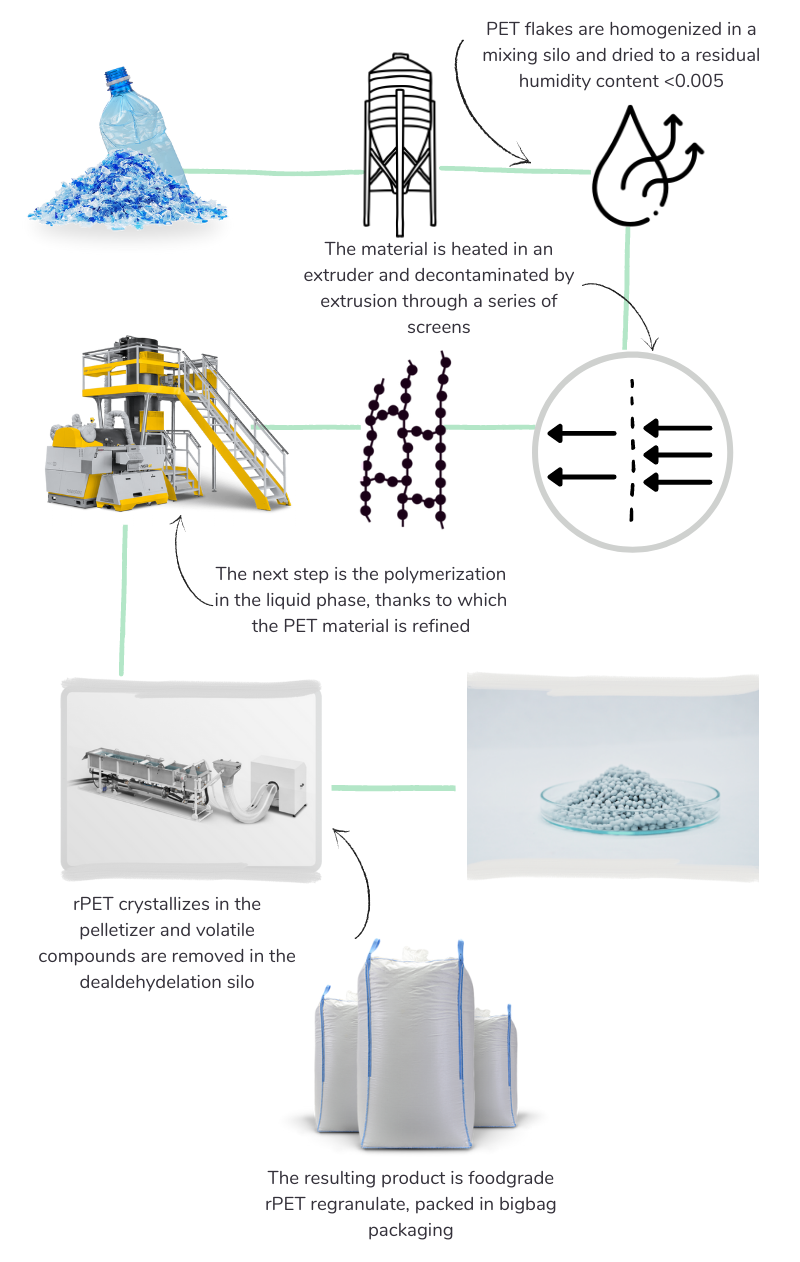Principle of production of rPET regranulate
The inlet material is sorted, washed and pre-dried PET flakes which we buy from verified suppliers. In the production of regranulate, the first step is to dry pet flakes to residual humidity <0.005%.
The heated air flows through the dried material, carries remaining water from the dryer to the condensation unit. Here the water vapours are condensed, and the liquid is collected.
The next step of technological processing is the melting of the raw material in the extruder into a form of melt. To do this, the necessary heat is generated by electric heating bodies and friction of its own raw material in the extruder chamber. The melt is filtered through a passage through the 50 μm suits.
Melt is pumped into the vacuum tank of the reactor, where is mixed in the presence of vacuum and an elevated temperature of 270°C. This process increases the internal viscosity (IV) of the material, which is a determining property of the material quality. The melt is filtered again and chopped into granules of weight 15-30 mg.
The granules are cooled with water to 80°C and by maintaining this temperature for about 20 minutes, the material spontaneously crystallizes. Crystallinity of the produced material is around 30%.
Finally, the product in the form of granulate is stabilized to the residual content of acetaldehyde <1 ppm.
The final product is weighed into large volume bigbag packaging. Our peak production is 16,000 tons of rPET per year.
The quality of the inlet PET flakes is evaluated both at our suppliers and in our internal laboratory. Samples of the output material – rPET regranulate – are also undergoing the testing process.
The methodology of testing and evaluation of samples is processed in cooperation with laboratories of our suppliers and customers. We also cooperate with research laboratories of the University of Technology in Brno.

